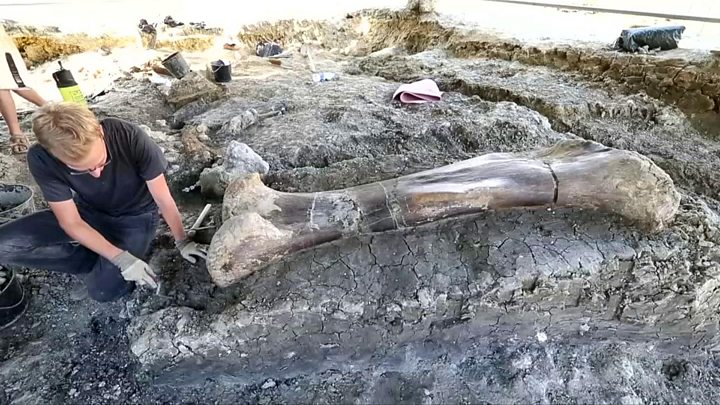This website uses cookies so that we can provide you with the best user experience possible. Cookie information is stored in your browser and performs functions such as recognising you when you return to our website and helping our team to understand which sections of the website you find most interesting and useful.
 Image copyright Reuters
Image copyright ReutersPalaeontologists have found the fossils of a new megaraptor in Patagonia, in the south of Argentina.
Megaraptors were large carnivorous dinosaurs with long arms and claws measuring up to 35cm (14in) in length.
They also had powerful legs and long tails which made them more agile than the Tyrannosaurus rex and allowed them to catch smaller herbivorous dinosaurs.
The new megaraptor is one of the last of its group, before dinosaurs became extinct, the scientific team says.
What did the scientists find?
The team led by Fernando Novas from the Natural Sciences Museum in Buenos Aires discovered many fossils during its month-long field work in Estancia La Anita, in southern Santa Cruz province.
You may also be interested in:
The most unusual ones were the remains of a large carnivorous dinosaur belonging to the Megaraptoridae family.
The scientists uncovered vertebrae, ribs and part of what would have been the dinosaur's chest and shoulder girdle.
The fossils they found belonged to a specimen measuring approximately 10m (33ft) in length, one of the largest of the Megaraptoridae found so far.
In a statement [in Spanish], the team said that the remains date back 70 million years - towards the end of "the age of the dinosaurs".
Fernando Novas told Reuters news agency that "this new megaraptor that we now have to study would be one of the last representatives of this group" before the dinosaurs became extinct.
What did it look like?
The megaraptor had long, muscular arms with sickle-like claws and a long tail which provided it with balance.
Slimmer and more agile than the T. rex it is thought to have used its arms and claws rather than its jaw as its main weapon when hunting its prey.
"It had powerful and elongated legs which allowed it to take big steps," palaeontologist Aranciaga Rolando said.
The scientists from the Natural Sciences Museum believe it would have used its speed to hunt ornithopods, plant-eating dinosaurs which walked on two legs.
You may want to watch:

Media playback is unsupported on your device



 Africana55 Radio
Africana55 Radio 
